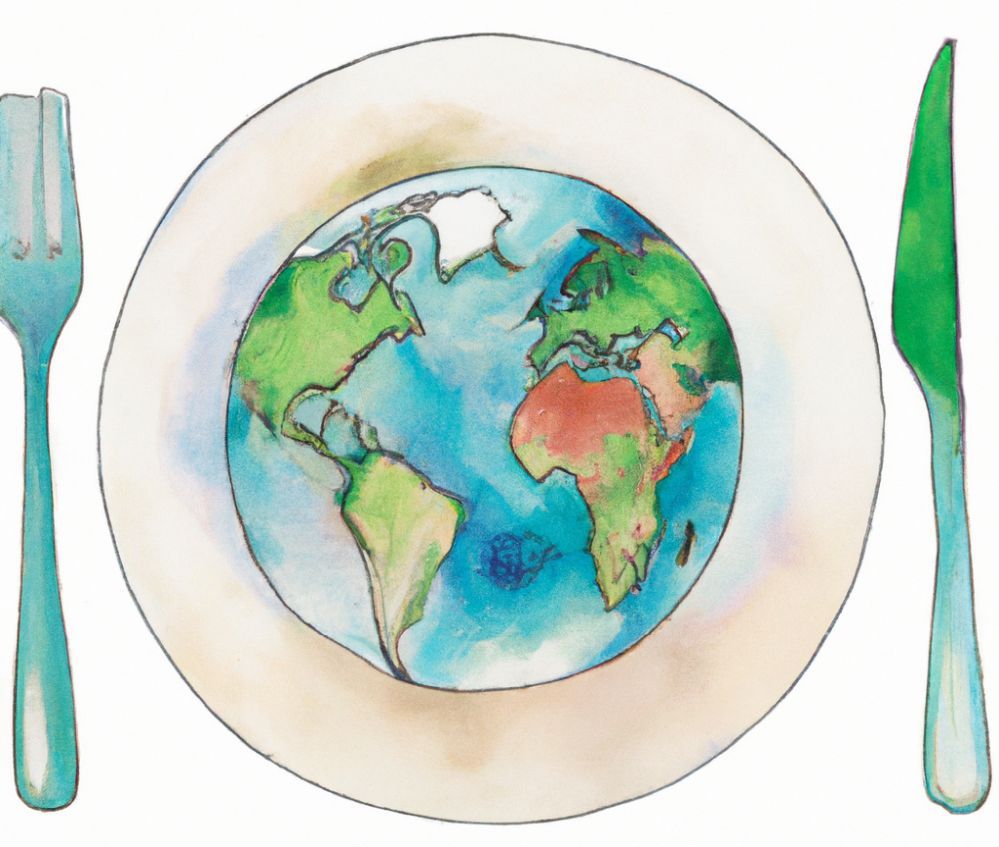Dr. Ty Beal is a research advisor on the knowledge leadership team at the Global Alliance for Improved Nutrition (GAIN).
The views expressed in this guest article are the author’s own and do not necessarily represent those of AgFunderNews.
In 2019, EAT-Lancet published a landmark report on the healthiest and most climate-friendly diet. But does this ‘planetary health’ diet provide sufficient micronutrients without fortification or supplementation?
Can we design a diet that is both nutritious and environmentally friendly? Or can we find a food systems approach that optimizes nutrient adequacy, noncommunicable disease risk, planetary health, food security, and dietary preferences?
The short answer is there is no easy way to optimize everything, and there will be trade-offs.
The original planetary health diet—which substantially restricts the intake of highly processed foods and animal sourced foods—was great for protection against noncommunicable diseases and reducing the environmental impact of our diets. It would also improve food security.
But it had two problems: It lacked some micronutrients, and it did not meet consumer preferences; for example, people generally want more red meat than is recommended.

Four ways to improve the nutrient adequacy of the planetary health diet
With this in mind, in a recent publication in The Lancet Planetary Health we used the latest data on food composition and recommended intakes to suggest some feasible dietary changes to the planetary health diet to ensure micronutrient adequacy. We proposed eating more animal-sourced foods and less phytate.
This means more tubers, fish, eggs, beef, chicken, pork, seeds, and organ meats, and fewer whole grains, pulses, nuts, and soy. This diet may not be the best for the environment, cost, or minimizing noncommunicable diseases but it is micronutrient adequate and may be more realistic.
In our view there are four ways to improve nutrient adequacy of the planetary health diet, which together can also help achieve acceptable diets.
1. Dietary change
As our paper suggests: Eat more animal-sourced foods and less phytate. Global dietary guidelines allow more animal-source foods than the planetary health diet, but this could affect food security if these foods are too expensive for low-income people.
The EAT-Lancet authors argue that any more animal-source foods than what they propose would harm the planet. This may be true, but some scientists disagree. It may be possible to produce more animal-source foods using sustainable methods that use land unsuitable for crops and recycle waste.
Eating less phytate would also help absorb minerals such as iron and zinc, which are low in the planetary health diet. But this could also lower protection against noncommunicable diseases if overdone, as phytate can help prevent noncommunicable diseases.
Consuming a moderate amount of minimally processed nuts, seeds, legumes, and whole grains regularly can contribute to healthy diets that protect against noncommunicable diseases while not causing mineral deficiencies.
2. Fortification
Adding micronutrients to staple foods can improve micronutrient adequacy. It is also affordable and has low environmental impacts. Foods that can be fortified in the planetary health diet include whole grains, oils, sweeteners, and salt.
In theory (or in models), fortification can make up for all the shortfalls without changing the diet, although in reality it is not that simple. Different people have different needs, eat different amounts of each food and have different access to fortified foods. Also, not all foods are industrially processed, and sometimes companies add fewer nutrients than legislation requires, so it is hard to ensure everyone gets the right amount of nutrition.
Still, fortification can help achieve nutrient adequacy, improve affordability of micronutrients, have little effect on noncommunicable diseases if it does not increase ultra-processed foods intake, and fit within dietary preferences.
3. Biofortification
Biofortification involves breeding crops to be higher in nutrients and more resilient. Foods that are often biofortified include cereals, legumes, vegetables, fruits, roots, and tubers. The benefit of biofortification is that the foods have more nutrients naturally.
This is helpful because the nutrients are in a food matrix and available in unprocessed foods. It also avoids the challenges of adherence and implementation of fortification. The challenge is to integrate biofortification into breeding programs and scale up biofortified varieties in the private and public sector to reach many people.
4. Supplementation
Supplementation provides one or more concentrated micronutrients to be consumed alone in the form of pills or added to food in the form of micronutrient powders or lipid-based nutrient supplements.
Supplements can be effective, affordable, and sustainable ways to improve nutrient adequacy. But it depends on the supplement and the person who takes it; there are side effects and other issues. There are also challenges with access and compliance to ensure global coverage.
Moving forward
We do not have to choose only one of these four strategies. None of them can work perfectly or reach everyone by themselves. Also, people have different preferences for fortified foods, biofortified foods, and supplements; they are not acceptable to all.
These challenges are seen in the US and UK; both are rich countries with available supplements and fortification policies and programs but where many women still lack micronutrients including iron, folate, and vitamin D.
Moreover, climate change is expected to lower iron and zinc in grains, making these nutrients even harder to get, especially from plant-based diets like the planetary health diet.
To ensure nutrient adequacy and address food security, noncommunicable diseases, and planetary health, we need all strategies: dietary change, fortification, biofortification, and supplementation.



